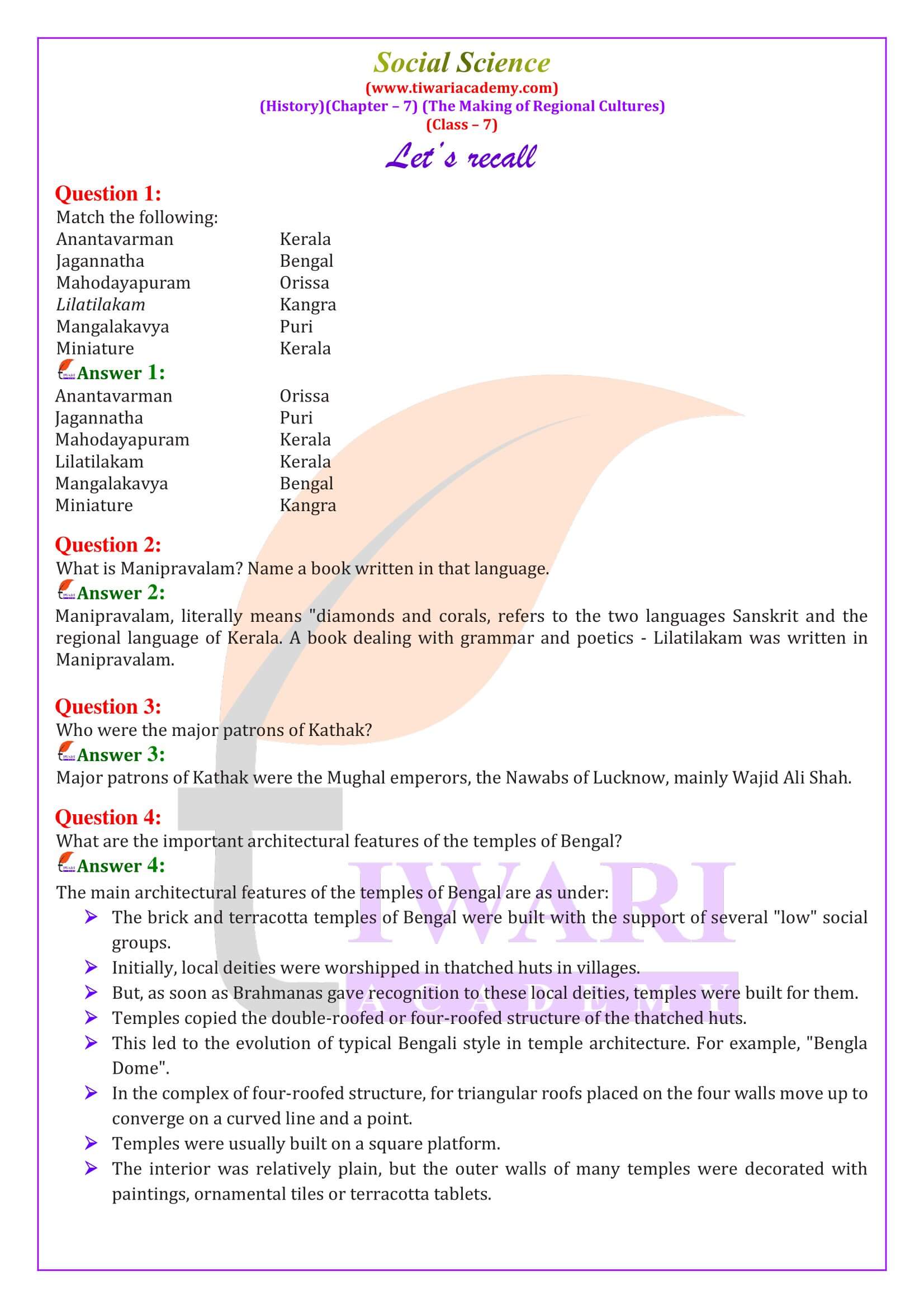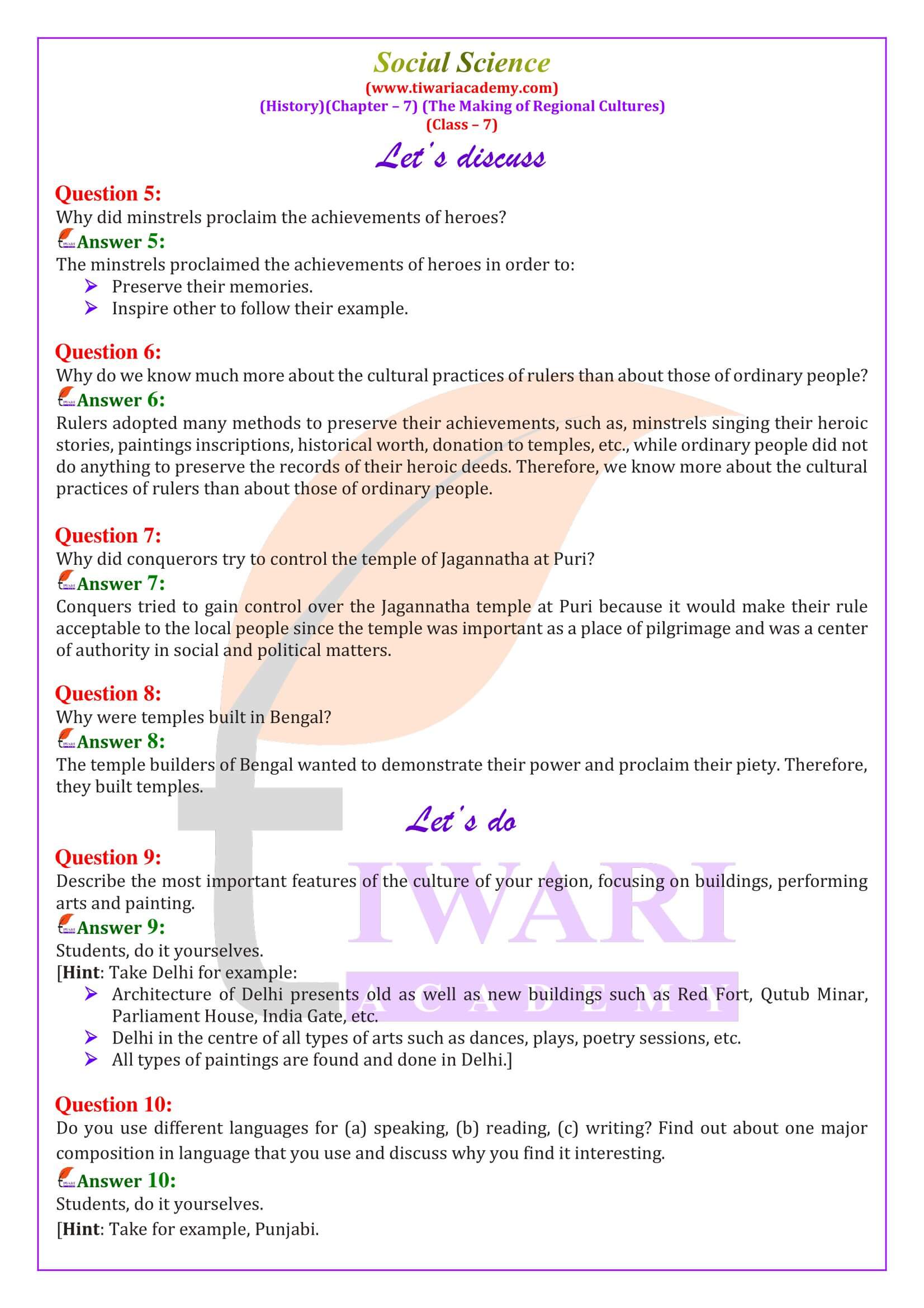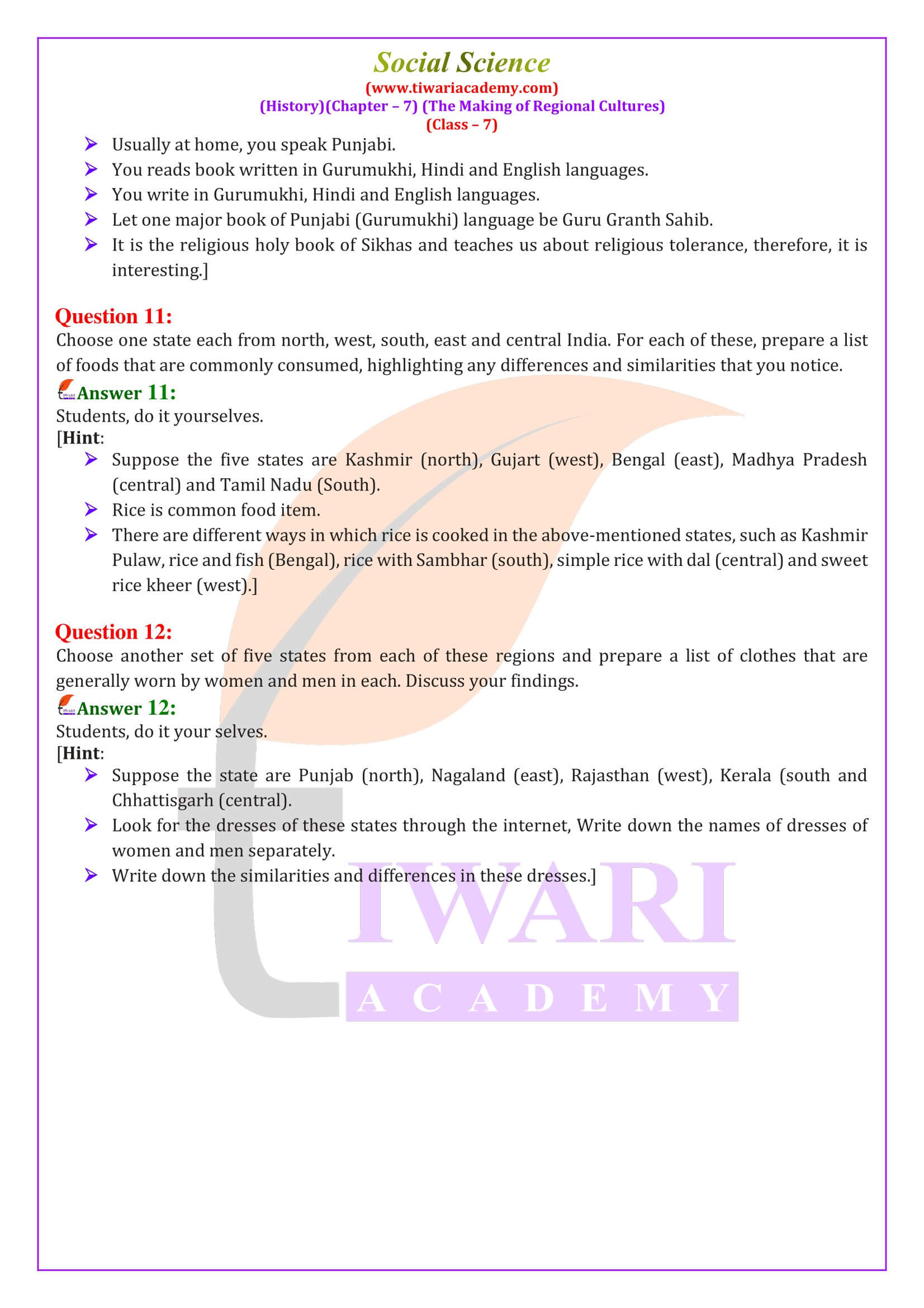NCERT Solutions for Class 7 Social Science History Chapter 7 The Making of Regional Cultures in English Medium and Hindi Medium to View online or download in PDF format updated for new academic session 2025-26. Download NCERT Solutions App 2025-26 based on updated NCERT Solutions for the academic session 2020–2021. Download all the study material and solutions free of cost from this website.
NCERT Solutions for Class 7 Social Science History Chapter 7
Class 7th History Chapter 7 Solution in Hindi and English Medium
| Class: 7 | History |
| Subject: | Social Science |
| Chapter 7: | The Making of Regional Cultures |
| Academic Session: | 2025-26 |
| Medium: | Hindi and English |
Class 7 History Chapter 7 Question Answers
CBSE NCERT Solutions for Class 7 Social Science History Chapter 7 The Making of Regional Cultures in English and Hindi Medium, free to use or download, is given here. Download NCERT Solutions 2025-26 based on latest NCERT Books and Online Solutions app for new session from Play Store or App Store.
Class 7 History Chapter 7 in English Medium
The Story of Kathak
If heroic traditions can be found in different regions in different forms, the same is true of dance., Kathak, now associated with several parts of north India. The term kathak is derived from katha, a word used in Sanskrit and other languages for story. The kathaks were originally a caste of story-tellers in temples of north India, who embellished their performances with gestures and songs. Kathak began evolving into a distinct mode of dance in the fifteenth and sixteenth centuries with the spread of the bhakti movement. The legends of Radha-Krishna were enacted in folk plays called rasa lila, which combined folk dance with the basic gestures of the kathak story-tellers.
Class 7 History Chapter 7 Extra Questions
Describe the Cheras and the Development of Malayalam.
The Chera kingdom of Mahodayapuram was established in the ninth century in the south-western part of the peninsula, part of present-day Kerala. It is likely that Malayalam was spoken in this area. The rulers introduced the Malayalam language and script in their inscriptions.
What is the Jagannatha Cult?
The regional cultures grew around religious traditions. The best example of this process is the cult of Jagannatha (literally, lord of the world, a name for Vishnu) at Puri, Orissa. To date, the local tribal people make the wooden image of the deity, which suggests that the deity was originally a local god, who was later identified with Vishnu.
What do you know about Traditions of Heroism?
In the nineteenth century, the region that constitutes most of present-day Rajasthan, was called Rajputana by the British. While this may suggest that this was an area that was inhabited only or mainly by Rajputs, this is only partly true. There were (and are) several groups who identify themselves as Rajputs in many areas of northern and central India. And of course, there are several peoples other than Rajputs who live in Rajasthan. However, the Rajputs are often recognised as contributing to the distinctive culture of Rajasthan.
Class 7 Social Science – History Chapter 7 – Important Questions
What is Manipravalam? Name a book written in that language.
Manipravalam, literally means “diamonds and corals, refers to the two languages Sanskrit and the regional language of Kerala. A book dealing with grammar and poetics – Lilatilakam was written in Manipravalam.
Who were the major patrons of Kathak?
Major patrons of Kathak were the Mughal emperors, the Nawabs of Lucknow, mainly Wajid Ali Shah.
What are the important architectural features of the temples of Bengal?
The main architectural features of the temples of Bengal are as under: The brick and terracotta temples of Bengal were built with the support of several “low” social groups. Initially, local deities were worshipped in thatched huts in villages. But, as soon as Brahmanas gave recognition to these local deities, temples were built for them. Temples copied the double-roofed or four-roofed structure of the thatched huts. This led to the evolution of typical Bengali style in temple architecture. For example, “Bengla Dome”. In the complex of four-roofed structure, for triangular roofs placed on the four walls move up to converge on a curved line and a point. Temples were usually built on a square platform. The interior was relatively plain, but the outer walls of many temples were decorated with paintings, ornamental tiles or terracotta tablets.
Why did minstrels proclaim the achievements of heroes?
The minstrels proclaimed the achievements of heroes in order to: Preserve their memories. Inspire other to follow their example.
Why do we know much more about the cultural practices of rulers than about those of ordinary people?
Rulers adopted many methods to preserve their achievements, such as, minstrels singing their heroic stories, paintings inscriptions, historical worth, donation to temples, etc., while ordinary people did not do anything to preserve the records of their heroic deeds. Therefore, we know more about the cultural practices of rulers than about those of ordinary people.
Why did conquerors try to control the temple of Jagannatha at Puri?
Conquers tried to gain control over the Jagannatha temple at Puri because it would make their rule acceptable to the local people since the temple was important as a place of pilgrimage and was a center of authority in social and political matters.
Why were temples built in Bengal?
The temple builders of Bengal wanted to demonstrate their power and proclaim their piety. Therefore, they built temples.
Important Notes on 7th History Chapter 7




